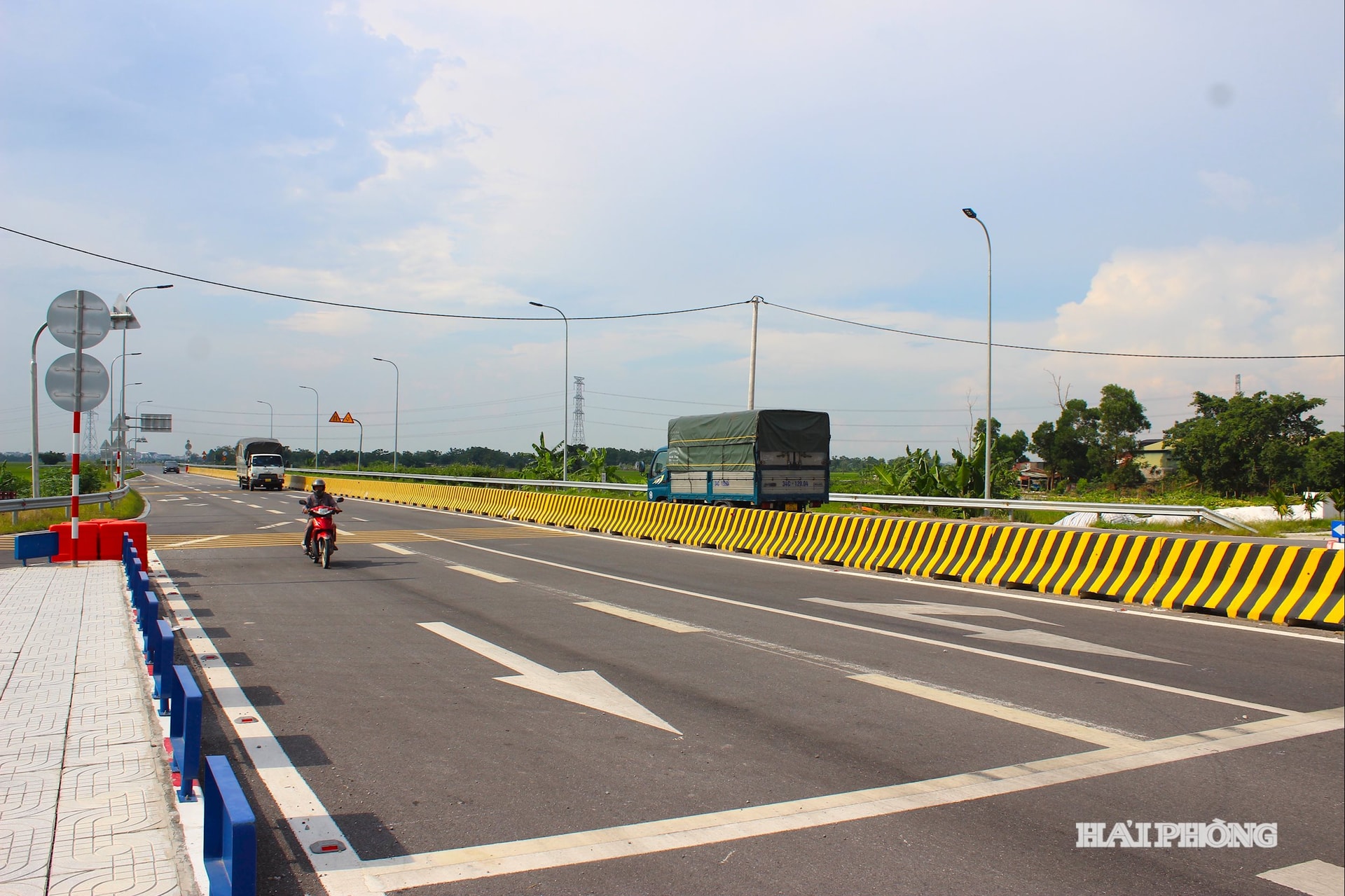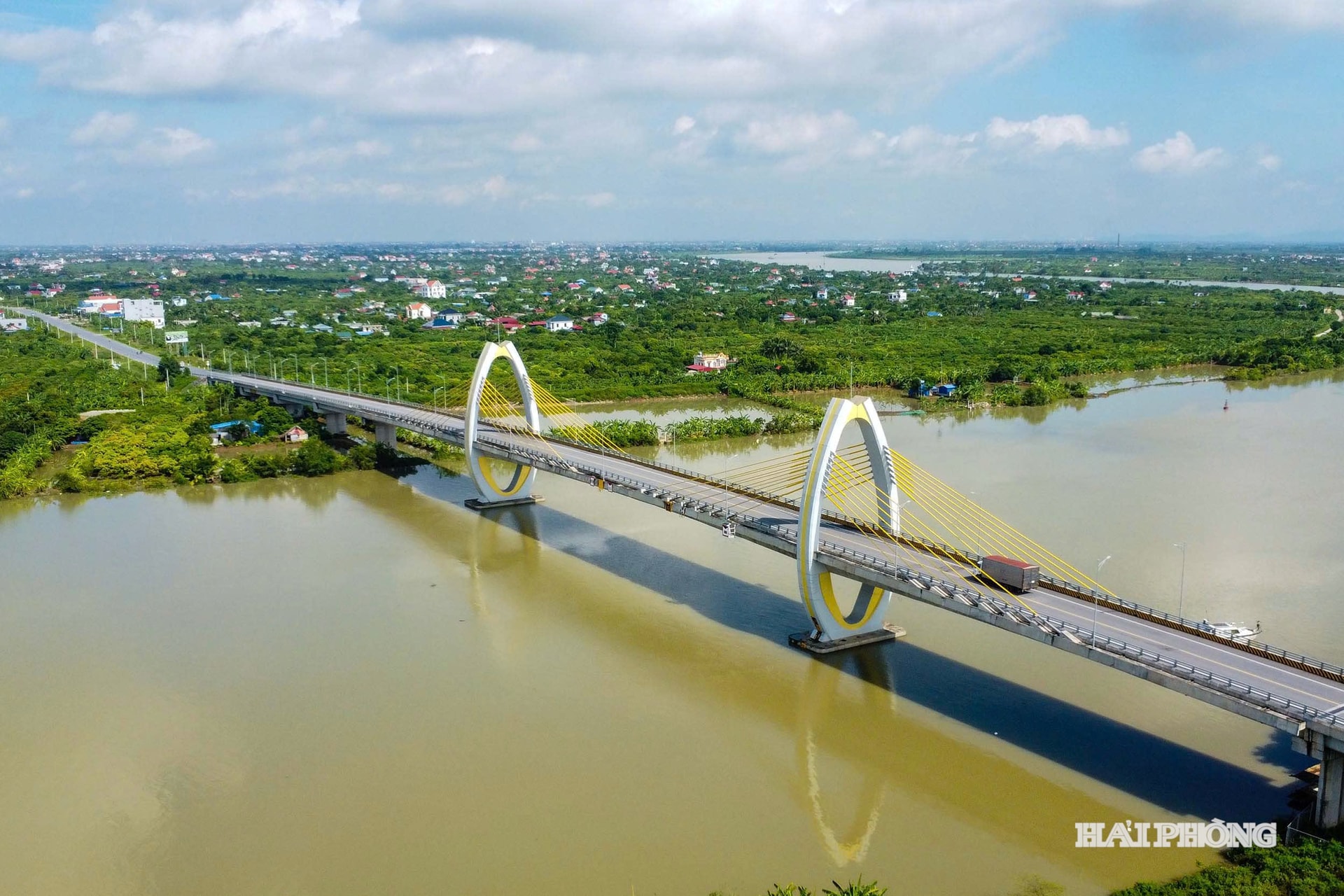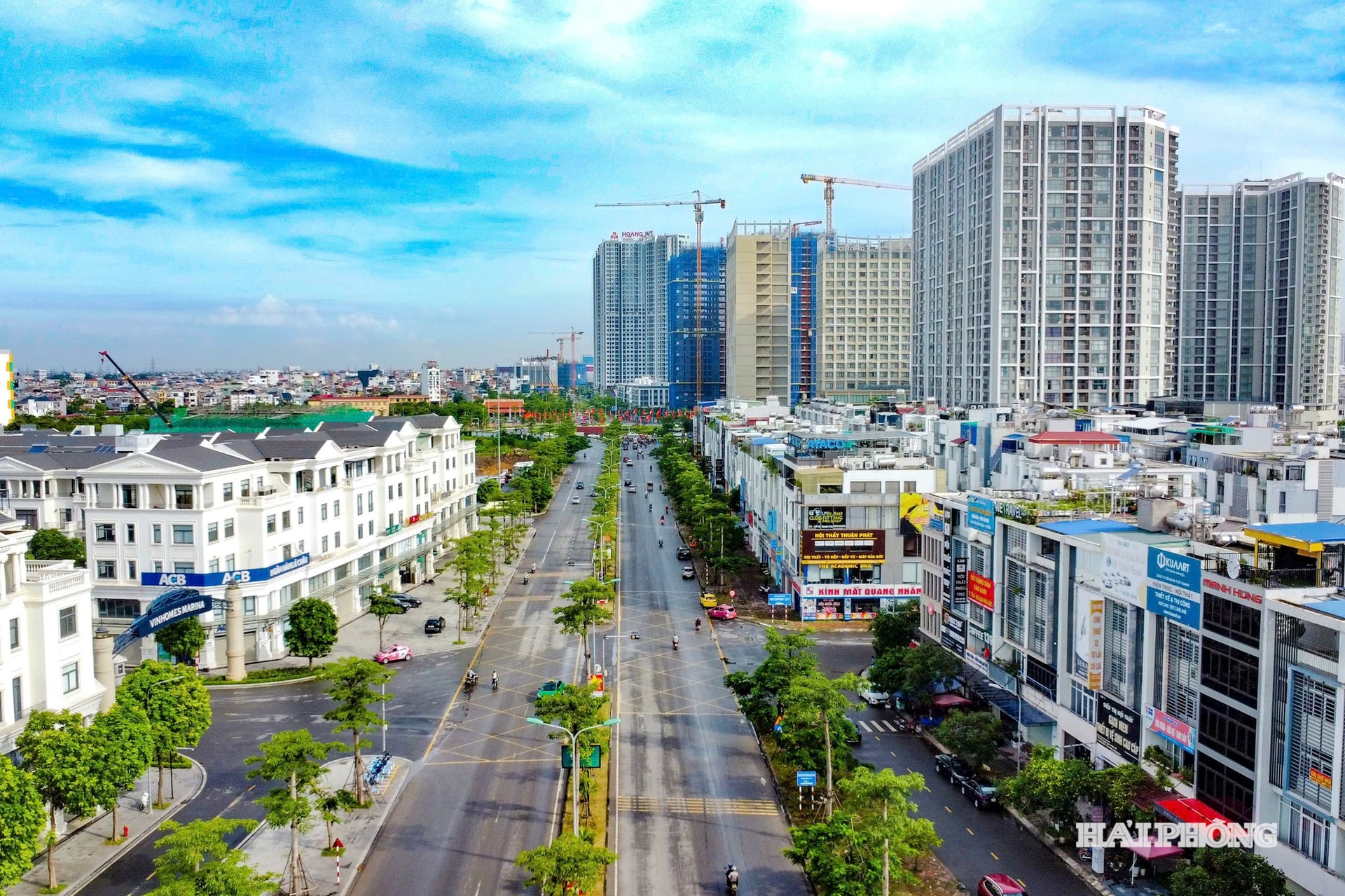Breakthroughs in Hai Phong’s transport infrastructure from west to east
Transport breakthroughs achieved by the former Hai Duong province and the former Hai Phong city are expected to drive the newly merged city toward faster development.

The west opens vital traffic routes
In the 2020 – 2025 tenure, the former Hai Duong province dedicated significant resources to transport infrastructure.
The East – West trunk-road construction project was the first Group A transport one of the province with a total investment of 1.778 trillion VND. It was also the province’s longest road project and served as its arterial route.
With a total length of 36.5 km, the East – West trunk-road was planned with 4 – 6 lanes, initially built to Class III standards (12 m roadbed, 11 m carriageway). The project included the construction of two new bridges, namely Phi Xa and Bac Hung Hai.
The first package broke ground in July 2022, the last in January 2023, and the entire project was completed and inaugurated on April 19, 2025.

On the same day, the North – South trunk-road of the former Thanh Mien district was also inaugurated. This road links with the East – West trunk-road to form a continuous arterial corridor running across the southern part of the former Hai Duong province.
According to the Western Hai Phong Construction Investment Project Management Board, the completion of these projects holds great significance as they formed an inter-regional traffic axis linking National Highway 5 with the Ha Noi – Hai Phong Expressway, National Highways 38B and 10, as well as connecting the former districts of Cam Giang, Binh Giang, Thanh Mien, Ninh Giang, Tu Ky, and Thanh Ha.
The new route contributes to completing the local transport planning, attracting investment into the dynamic industrial region of the former Hai Duong province, and creating breakthroughs in socio-economic development for the former districts of Cam Giang, Binh Giang, and Thanh Mien in particular, and the entire province in general, now the western part of Hai Phong city.
Also during the 2020 – 2025 term, the former Hai Duong province planned new strategic transport corridors, focusing resources on 57 major projects with a combined length of about 285 km and a total investment of nearly 30 trillion VND. It socialized investments for four traffic projects, jointly built six large river-crossing bridges, and implemented two major inland waterway port projects in the former Ninh Giang district and the former Kinh Mon town.

The east - the main Northern gateway to the sea
During this term, in the eastern part of Hai Phong, transport infrastructure has undergone a breakthrough toward synchronization and modernization, reinforcing the city’s role as a key transport hub and the main gateway to the sea for Northern provinces and cities, with both inter-regional and international connections.
In terms of maritime transport, Hai Phong’s Lach Huyen international gateway port system continues to be improved, capable of handling container vessels of up to 165,000 DWT (reduced load).
The city has also invested in transport infrastructure connecting logistics centers with the international seaport and linking to economic corridors and beltways.
Green and Yusen Logistics Centers have already come into operation, while the CDC Hai Phong Gateway Port Trade and Logistics Center and the Deep C3 Industrial Park Logistics Center are under construction.
Hai Phong’s seaport system has developed strongly. Lach Huyen International Gateway Port has already put berths 1 - 6 into operation, with investment procedures underway for the remaining berths.

Thanks to modern, synchronized investments, Hai Phong has reinforced its position as the maritime gateway and major logistics hub of northern Vietnam. Between 2020 and 2024, the city’s total import-export turnover reached about 317.3 billion USD, and its e-commerce index ranked among the nation’s top five. In the first eight months of 2025, cargo throughput at Hai Phong’s ports reached 120.14 million tons, up 12.25% year-on-year.
Beyond seaports, Cat Bi International Airport is also being expanded by the Airports Corporation of Vietnam, with construction of Passenger Terminal 2, phase 2 expansion of the aircraft apron, and a new cargo terminal underway.
From 2020 to 2024, Hai Phong built 35.27 km of new national highways, 30.78 km of provincial roads, 55.49 km of district roads, 137 km of urban roads, 22 bridges with a combined length of over 10,430 m, and more than 1,000 km of rural roads.
With today’s impressive infrastructure, Hai Phong’s economy has taken off, and people’s lives are becoming increasingly prosperous and happy.
Officials, Party members, and residents have confidence and high expectations that the transport infrastructure, built upon the achievements of both the former Hai Duong province and Hai Phong city before the merger, will enable the new Hai Phong city to “take off” and reach new heights in the next term.
PHONG TUYET – PHAM CUONG
